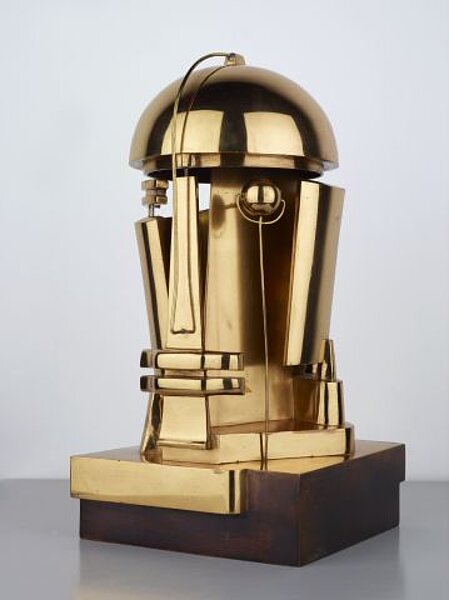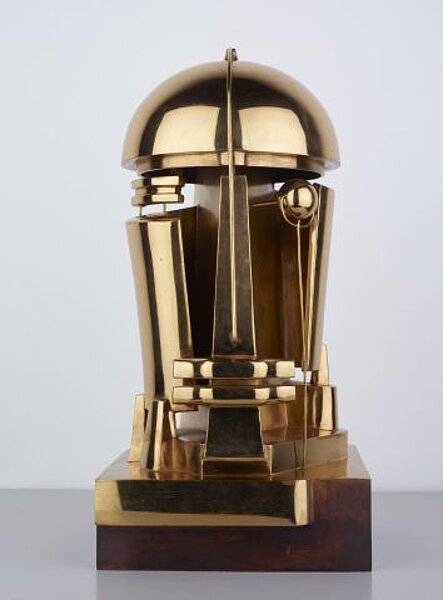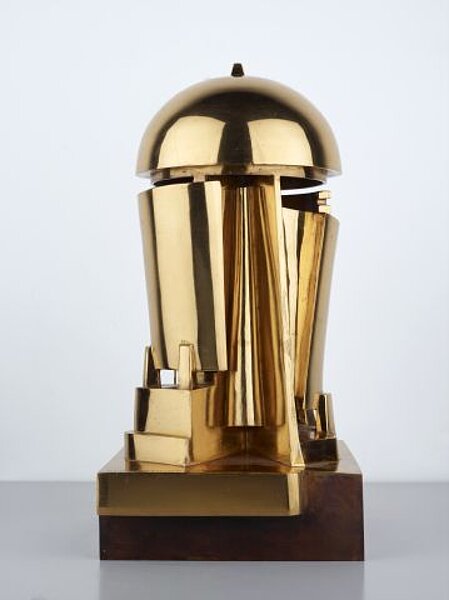
Belling, Rudolf
Skulptur 23
Sculpture 23
1923
| Object description | Bronze casting |
|---|---|
| Object category | plastic |
| Material |
object:
bronze
|
| Technique |
object:
bronze casting
|
| Dimensions |
object size:
height: 43 cm,
width: 20 cm,
depth: 20 cm
object:
weight: 15,1 kg
|
| Year of acquisition | 1962 |
| Inventory number | P 24/0 |
| Creditline | mumok - Museum moderner Kunst Stiftung Ludwig Wien |
| Rights reference | Bildrecht, Wien |
| Further information about the person | Belling, Rudolf [GND] |
| Literature | Laboratorium Moderne/Bildende Kunst, Fotografie und Film im Aufbruch |
The technical and robot-like form of “Sculpture 23” by Rudolf Belling that is on show here is a polished bronze cast made in 1923. The human form of the head appears to be composed of mechanical parts. At the time it was made, this three-dimensional sculpture, with its feeling of having been constructed, had a style-setting effect which even influenced architecture. Curiously, the machine-like aesthetics expressed by Belling in his bronze sculpture were to become the model for the first petrol stations in Germany erected by OLEX, the oil company, in the 1920s. With his oeuvre, the German sculptor Rudolf Belling delineated the central moment : volume and space. In designing his sculptures he considered both these aspects to be equal and lead to a whole. His works plumb the abstract and constructivist possibilities of sculpture making it a game of volumes. As one of the co-founders of the so-called “November Group” in Berlin he engaged in creative exchange with the best-known artists of the period around 1920. This included architects, painters, musicians and art theorists such as Campendonk, Johannes Itten and Wassily Kandinsky. In 1937 he was forced to emigrate from Germany and taught at the University of Istanbul for almost thirty years.
© mumok – museum moderner kunst stiftung ludwig wien





